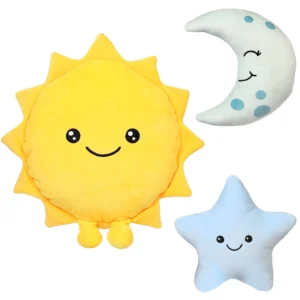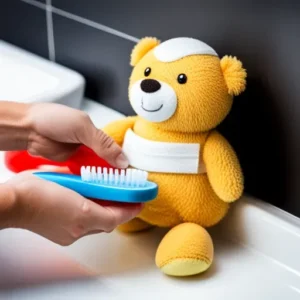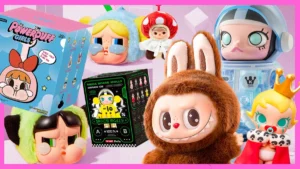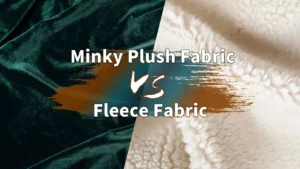When it comes to making the perfect plush toy, choosing the right materials is more than just a technical decision — it’s what turns a simple stuffed object into a cherished companion. From toddlers clutching their favorite cuddly friend to collectors seeking that softest touch, the material defines everything: the look, feel, safety, and longevity. But with so many fabric and stuffing options available, how do you decide which ones truly fit your plush’s purpose?
In short, the best materials for making plush toys combine softness, durability, safety, and eco-friendliness. Common choices include cotton, minky, fleece, and velvet fabrics paired with polyester fiberfill or eco-friendly stuffing. Selecting materials involves balancing these qualities based on the toy’s intended use and customer preferences.
Imagine a child hugging a plush bear every night — that softness and safety weren’t accidental but a thoughtful choice of materials behind the scenes. Let’s explore the world of plush fabrics and stuffing, uncovering what makes each option unique and how to pick the best one for your next plush masterpiece.
1. What are the most popular fabrics used for plush toys?

Popular plush fabrics include cotton, minky, fleece, and velvet — each known for its softness, durability, and appearance, making them favorites in plush toy production.
- Cotton: Known for its natural feel, breathability, and hypoallergenic qualities, cotton is ideal for baby toys and sensitive users. It’s eco-friendly, easy to dye, and provides a gentle texture that lasts after washing. However, it’s less plush compared to synthetic fabrics.
- Minky Fabric: This ultra-soft polyester fabric offers a luxurious, silky texture that kids love. Its durability and vibrant colors make it popular for high-end plush toys. Minky’s quick drying and easy maintenance add to its appeal.
- Fleece: With a warm and fuzzy surface, fleece is durable and resists pilling. It’s also lightweight and holds up well to frequent washing, making it common for everyday plush toys.
- Velvet: Velvet provides a rich, glossy finish ideal for collector’s items or premium toys. It demands more careful care but adds a touch of luxury.
- Other fabrics: Some plush toys use specialty materials like chenille, faux fur, or suede-like fabrics to create unique textures and effects.
- Comparison Table: Popular Plush Fabrics
| Fabric | Softness | Durability | Maintenance | Ideal Use |
|---|---|---|---|---|
| Cotton | Moderate | Good | Machine washable | Baby toys, hypoallergenic |
| Minky | Very soft | High | Easy care | High-end, vibrant plushies |
| Fleece | Soft & fuzzy | High | Easy care | Everyday plush toys |
| Velvet | Luxurious soft | Moderate | Delicate care | Collectibles, premium plush |
2. Which stuffing materials provide the best softness and durability?

Polyester fiberfill is the most common stuffing due to its softness, resilience, and safety, but eco-friendly alternatives are gaining popularity.
- Polyester Fiberfill: Lightweight, fluffy, and resilient, fiberfill maintains shape over time and is hypoallergenic. It’s affordable and widely available, making it the industry standard.
- Memory Foam & Microbeads: These provide unique textures and molds but are less common due to cost and safety concerns.
- Cotton and Wool Fill: Natural options prized for eco-friendliness and breathability, but they may clump and require special care.
- Recycled & Plant-Based Fillings: Sustainable options like recycled polyester and kapok fiber are increasingly used by eco-conscious brands.
- Safety & Longevity: Fillings must be non-toxic, resistant to mold/mildew, and washable without losing shape.
- Comparison Table: Common Stuffing Types
| Stuffing Type | Softness | Durability | Eco-Friendly | Ideal Use |
|---|---|---|---|---|
| Polyester Fiberfill | Very soft | High | Low | Mass production plush toys |
| Recycled Polyester | Soft | Moderate | Yes | Eco-friendly plush |
| Cotton/Wool Fill | Soft | Moderate | Yes | Premium natural plush |
| Microbeads | Moldable | Moderate | No | Specialty plush |
3. How do safety and hypoallergenic considerations influence material choice?

Safety concerns shape fabric and stuffing decisions, especially for toys designed for babies or allergy-prone users.
- Non-toxic Dyes and Materials: Fabrics and stuffing must meet strict safety certifications (like CPSIA or OEKO-TEX), ensuring no harmful chemicals are present.
- Hypoallergenic Properties: Natural fibers like cotton and specially treated synthetics reduce allergen risks.
- Choking Hazard Prevention: Materials should be securely stitched to prevent stuffing leaks; avoid small parts.
- Flame Retardancy: Plush toys often require flame-resistant materials or treatments without harmful chemicals.
- Washability: Safe materials must tolerate regular washing to maintain hygiene without degradation.
- Examples: Many children’s plush use cotton exteriors and polyester fiberfill for a safe, durable combination.
| Safety & Hypoallergenic Consideration | Description | Example/Notes |
|---|---|---|
| Non-toxic Dyes and Materials | Fabrics and stuffing must meet certifications (CPSIA, OEKO-TEX) to ensure no harmful chemicals | Certified safe materials for children’s toys |
| Hypoallergenic Properties | Use of natural fibers like cotton and treated synthetics to reduce allergen risks | Cotton exteriors commonly used |
| Choking Hazard Prevention | Secure stitching to prevent stuffing leaks; avoid small detachable parts | Design focus for baby-safe plush |
| Flame Retardancy | Use of flame-resistant materials or treatments without harmful chemicals | Required for regulatory compliance |
| Washability | Materials must withstand regular washing without losing integrity | Polyester fiberfill combined with washable fabrics |
4. Are eco-friendly and sustainable materials suitable for plush production?

Yes, eco-friendly fabrics and stuffing are increasingly practical and popular, balancing sustainability with quality.
- Organic Cotton: Grown without harmful pesticides, organic cotton is soft and sustainable, though usually pricier.
- Recycled Polyester: Made from plastic waste, recycled polyester reduces environmental impact while maintaining softness and durability.
- Kapok Fiber: A natural, plant-based stuffing alternative that is lightweight, biodegradable, and hypoallergenic.
- Bamboo Fabric: Soft and sustainable, bamboo is gaining traction as a plush fabric but requires careful processing.
- Challenges: Sustainable materials can cost more, have different care needs, and sometimes differ slightly in texture or durability.
- Market Trend: Consumers, especially parents, increasingly demand green toys, encouraging manufacturers to innovate with eco options.
| Eco-Friendly Material | Description | Advantages | Challenges |
|---|---|---|---|
| Organic Cotton | Grown without harmful pesticides; soft and sustainable | Soft, natural, hypoallergenic | Usually pricier |
| Recycled Polyester | Made from plastic waste; reduces environmental impact | Durable, soft, eco-conscious | May vary in quality |
| Kapok Fiber | Natural plant-based stuffing; lightweight, biodegradable, hypoallergenic | Biodegradable, light, safe | Different texture than synthetic |
| Bamboo Fabric | Soft, sustainable fabric gaining popularity | Soft, eco-friendly | Requires careful processing |
| Market Trend | Growing consumer demand for green toys | Drives innovation in materials | Cost and care variations |
5. What are the best cleaning and maintenance properties to look for in plush materials?
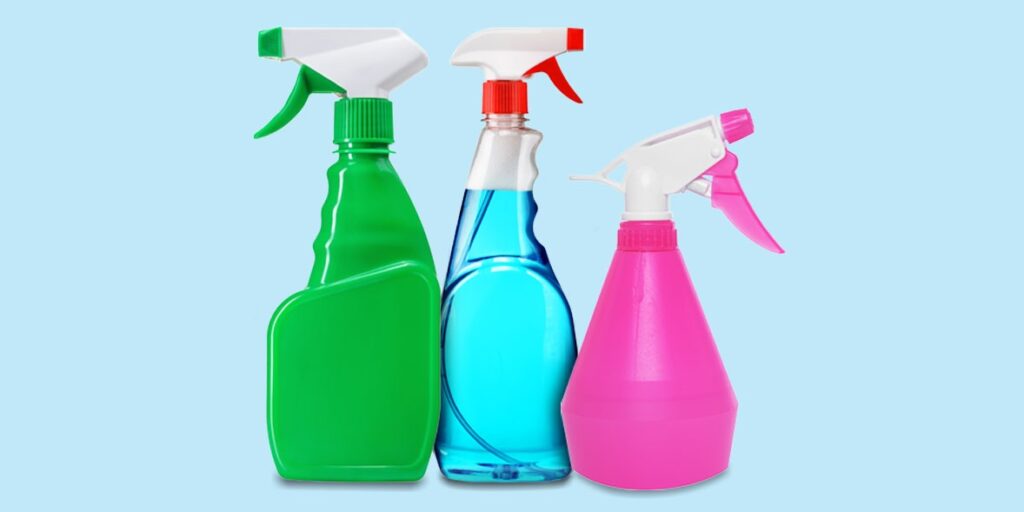
Materials that resist stains, dry quickly, and withstand frequent washing without losing softness are ideal.
- Machine Washability: Synthetic fabrics like minky and fleece often tolerate machine washing better than delicate natural fibers.
- Colorfastness: Fabrics should maintain color without fading or bleeding during cleaning.
- Drying Speed: Quick-drying materials prevent mildew and odors.
- Durability: Fabrics and stuffing that resist matting, pilling, or clumping keep toys looking fresh longer.
- Stain Resistance: Some plush fabrics have treatments to repel dirt and stains.
- Care Labels: Clear washing instructions improve customer satisfaction and toy longevity.
| Cleaning & Maintenance Property | Description | Benefits |
|---|---|---|
| Machine Washability | Synthetic fabrics (minky, fleece) often tolerate machine wash | Easy cleaning and convenience |
| Colorfastness | Fabrics maintain color without fading or bleeding | Long-lasting vibrant appearance |
| Drying Speed | Quick-drying materials prevent mildew and odors | Hygiene and freshness |
| Durability | Resistance to matting, pilling, or clumping | Keeps plush looking new longer |
| Stain Resistance | Some fabrics have treatments to repel dirt and stains | Easier maintenance and cleaner look |
| Care Labels | Clear washing instructions provided | Better customer experience and product care |
6. How does fabric texture affect the overall appeal and use case of plush toys?

Texture influences how a plush feels, looks, and fits the target market — from cuddly toddlers to adult collectors.
- Soft & Smooth Textures: Fabrics like minky and velvet attract tactile attention and convey luxury, ideal for premium or gift plushies.
- Fuzzy & Fluffy Textures: Fleece and faux fur provide warmth and a classic plush look, favored in everyday toys.
- Durable & Matte Finishes: Cotton and some velvets offer a natural, simple aesthetic suited for eco-friendly or minimalist designs.
- Novelty Textures: Some plush use unique fabrics (like sequins, glitter finishes) to appeal to fashion trends or niche audiences.
- User Experience: Toddlers often prefer soft, smooth fabrics that soothe, while collectors may prioritize visual uniqueness and craftsmanship.
| Fabric Texture Type | Description | Ideal Use Case |
|---|---|---|
| Soft & Smooth Textures | Fabrics like minky and velvet, tactile and luxurious | Premium plush, gift items |
| Fuzzy & Fluffy Textures | Fleece and faux fur, warm and classic plush look | Everyday toys, cuddly companions |
| Durable & Matte Finishes | Cotton and some velvets, natural and simple aesthetic | Eco-friendly, minimalist designs |
| Novelty Textures | Unique fabrics like sequins, glitter finishes | Fashion-forward, niche markets |
| User Experience | Toddlers prefer softness; collectors seek visual uniqueness | Age-appropriate and target customer focus |
Ready to Create Your Perfect Plush?
Choosing the right materials to make a plush toy is an art and science combined. It involves balancing softness, safety, durability, and sustainability — all while meeting your customers’ needs and values. At Kinwin, we specialize in providing high-quality, eco-friendly plush manufacturing solutions tailored to your design and functional requirements.
Contact Kinwin today to discuss your custom plush project, get a free quote, and partner with a manufacturer who values quality and sustainability as much as you do. Let’s bring your plush ideas to life with materials that make every hug count!




